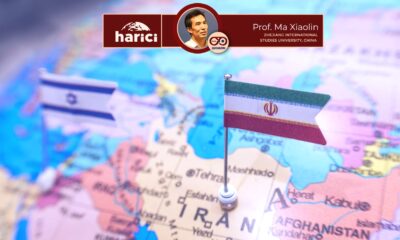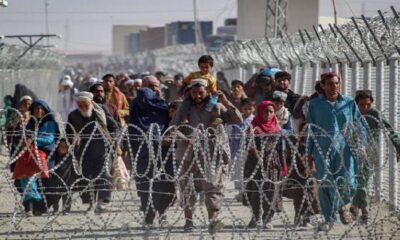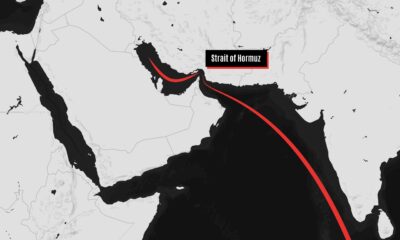Asia
Unprecedented escalation in the Middle East; How did Israel attack Iran?
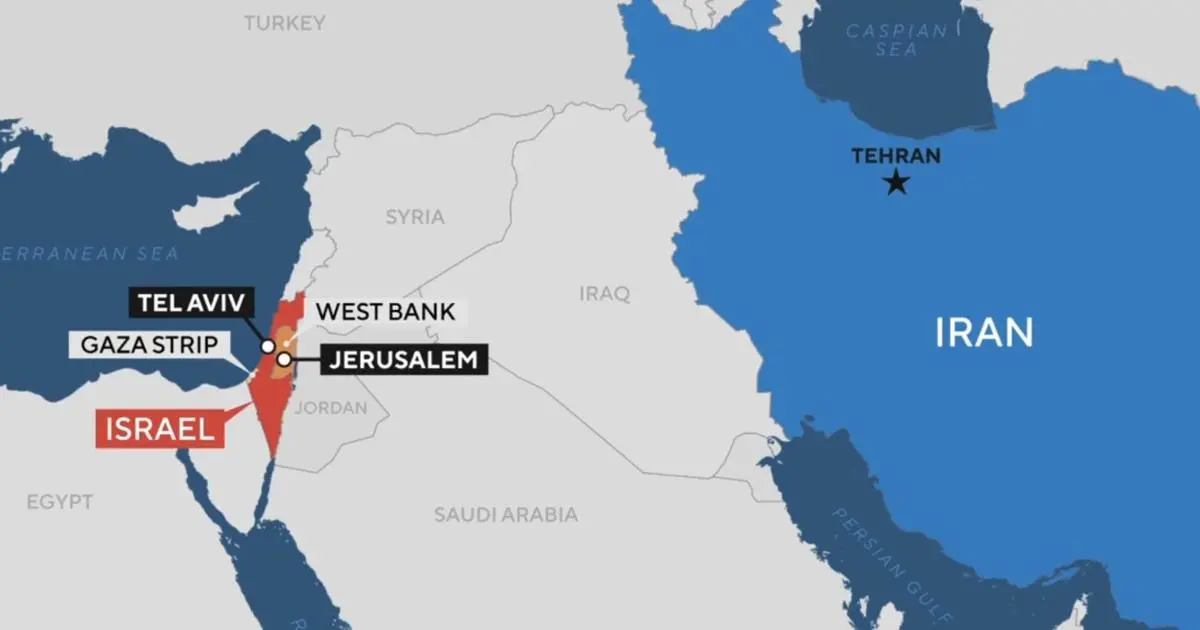
Iran has confirmed that two military personnel were killed following Israeli airstrikes early Saturday, involving over 100 drones and missiles, underscoring the scale of the operation. Iranian media identified the victims as Jahandidah and Staff Sergeant Shahrokhifar.
Israeli media says that Israeli officials, including the country’s Prime Minister Benjamin Netanyahu and Defense Minister Yoav Gallant have been closely monitoring the attack from the military’s command center in Tel Aviv.
The Israeli army said that this action was in response to Iran’s missile attack on the country earlier this month. This attack is the latest confrontation in the increasing conflicts between the two hostile countries.
After a few hours of the attack, the Israeli army announced that the country’s attacks have ended, and its goals have been achieved.
Israeli army spokesman, Daniel Hagari warned Iran not to react; while an Iranian news agency reported, quoting the country’s officials that Tehran will have a “proportionate” reaction to Israel’s actions.
Iranian media reported that several explosions occurred within hours in the capital and nearby military bases. This comes as before the sunrise on Saturday, Israel announced that three waves of attacks had been completed and the operation was over.
However, Iran announced that its air defense system succeeded in repelling Israeli attacks on military targets in the provinces of Tehran, Khuzestan and Ilam. But it confirmed that “limited” damage has been done to some places. So far, the details of the number of missiles fired and drones hitting targets in Iran have not been disclosed.
The region is close to a regional war ignited by the US
After Iran’s attack on Israel on October first, concerns among the Middle East countries about Israel’s attack on Iran has been intensified. At that time, Iran fired about 200 rockets at Israel and one person in the West Bank died as a result of these attacks.
Tensions between Israel and Iran, as arch-rivals of each other, have increased since Hamas, a group allegedly supported by Iran, attacked Israel on October 7, 2023. Hamas is also supported by Lebanon-based Hezbollah, which is also said to be supported by Iran.
With the escalation of Israel’s attacks on Lebanon’s Hezbollah since last month, including its airstrikes on the Lebanese capital Beirut and its ground operations and year-long war in Gaza, concerns have increased about the possibility of Iran and the United States being drawn into a regional war.
“In response to months of continuous attacks by the Iranian regime against the State of Israel, the Israeli Defense Forces are currently conducting precision strikes against military targets in Iran,” the Israeli military said in a statement.
The Israeli army claimed that it had ended its “targeted” attacks on Iran, targeting the country’s missile production facilities and missile defense systems. Israel added that its planes have returned safely to their bases.
The Israeli army emphasized in a statement: “If the Iranian regime makes the mistake of starting a new round of escalation, we will be forced to respond.”
Meanwhile, a US official said the targets did not include Iran’s energy infrastructure or nuclear facilities.
US President Joe Biden, who is the main supporter and supplier of weapons to Israel, previously warned that Washington would not support an attack on Tehran’s nuclear facilities and that Israel should consider other options instead of attacking Iran’s oil fields.
The United States was aware of the Israeli attacks
Video footage released by Iranian media showed air defense systems continuously firing at Israeli missiles in central Tehran.
Without specifying which sites were targeted, the Tasnim news agency reported that the IRGC bases that had been attacked were not damaged and said that as of 9:00 a.m. (05:30 GMT) after a pause during Israel’s attack, it resumed its flights.
Meanwhile, Israel’s defense minister also held talks with US defense minister Lloyd Austin after the attacks began.
The Pentagon says that Mr. Austin emphasized strengthening the US force posture to defend American, Israeli and partner forces and personnel throughout the region.
An American official told Reuters that Israel had informed the United States before the attack; But Washington was not involved in these attacks.
Iran is not willing to involve in war with Israel
Unfortunately, Iran is involved in a ping pong war with Israel and there is no end sees in sight. It is predicted that if the cycle of war continues, the US will be involved too. In this case, the situation will grow worse, and the damage will be serious.
It is the expectation that the United Nations and US should have behaved more responsibly and prevent the spread of war in the region.
It is a belief among the Iranian people that the United States tried to convince Israel to measure its attacks carefully, it also assured the country that it would help defend it if Tehran launched a counterattack. This support includes Biden’s decision to transfer US Terminal High Altitude Area Defense (THAAD) anti-missile defense systems to Israel. Biden has already sent about 100 American soldiers to advance the operation of these systems to the Middle East.
But the Iranian people and even the government are not willing to involve themselves in the war, but the spokesman of Iran foreign affairs ministry announced that Iran has the right to defend the country.
Reactions to Israel’s attack on Iran
Saudi Arabia condemned the attack as a “violation of sovereignty” and international law and called on all parties to show maximum restraint. Riyadh asked the international community to take necessary measures to reduce tensions and end conflicts in the region.
Meanwhile, the Ministry of Foreign Affairs of Pakistan, in a statement in response to Israel’s missile attack on Iran, said that these attacks are a “gross violation” of the United Nations Charter and international laws.
“These attacks undermine peace and stability in the region and cause a dangerous escalation of conflicts in the region,” the statement said, and held Israel responsible for the escalation and expansion of the conflict in the region.
These attacks have also been met with reactions from a number of Afghan politicians.
Hamid Karzai, the former president of Afghanistan, condemned Israel’s missile attack and called it a “violation of the national sovereignty and privacy” of Iran.
Asia
Chinese navy chief and top nuclear scientist expelled from legislature
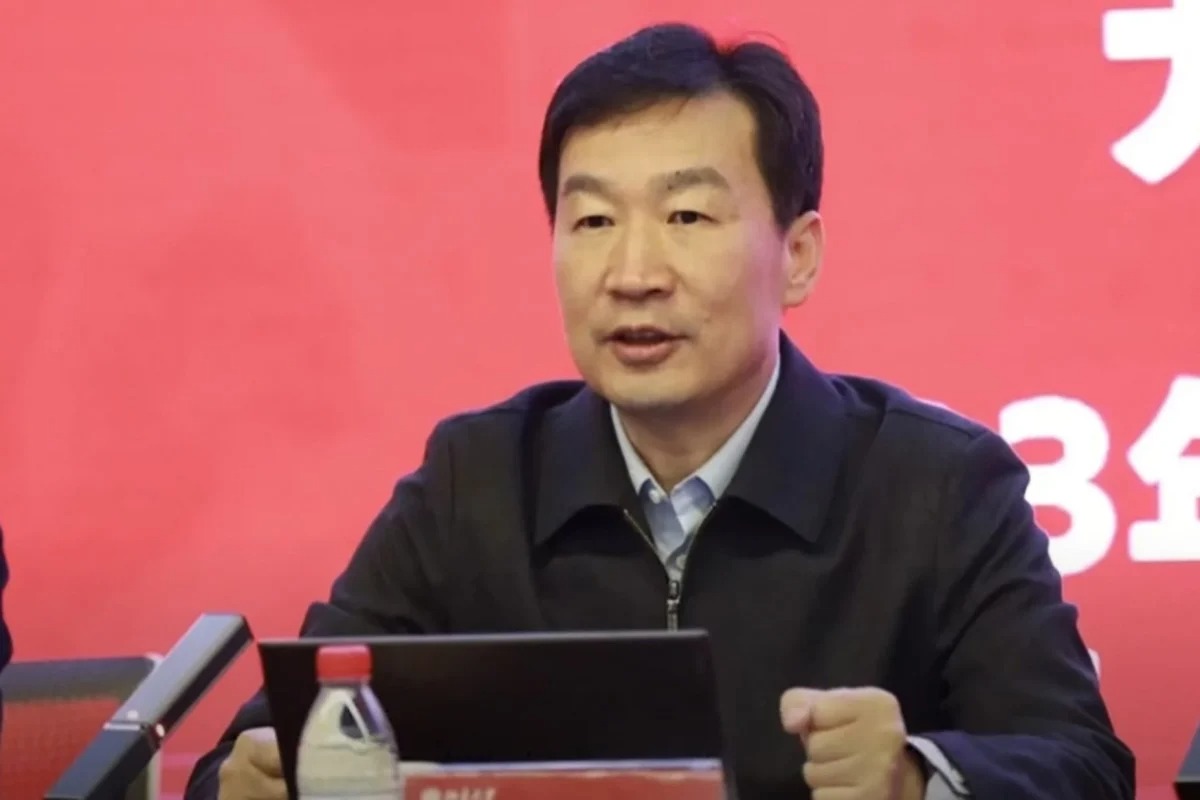
The chief of staff for the People’s Liberation Army (PLA) Navy, Vice Admiral Li Hanjun, and Liu Shipeng, the deputy chief engineer of the state-owned China National Nuclear Corporation, were removed from their positions in the country’s legislative body.
Li is the latest in a series of PLA generals and a handful of defense industry executives implicated in a widespread investigation within the military.
In a statement on Friday, the NPC Standing Committee announced, “The Navy Soldiers’ Congress has decided to remove Li Hanjun from his post as a representative to the 14th National People’s Congress.”
The Gansu People’s Congress also dismissed Liu Shipeng from his role as an NPC deputy.
Additionally, the Standing Committee revealed it had voted to remove Miao Hua, a former top general who previously oversaw the PLA’s ideological work, from the Central Military Commission (CMC), China’s highest military command body led by President Xi Jinping.
The removal of Li and Liu from their NPC memberships suggests they are facing serious disciplinary action.
China typically remains silent about purges within the military, and announcements from the NPC are one of the few indicators of such campaigns.
There is little public information available about Li and Liu, as both have worked in sensitive positions.
Before becoming the navy’s chief of staff, Li, 60, was the deputy director of the CMC’s Training and Administration Department. He was appointed to this role after serving for a year in the CMC’s Office for Reform and Organisational Structure.
In 2014, he was promoted to vice admiral upon his appointment as commander of the naval base in Fujian province, where Miao also spent a significant part of his career. At that time, he was the director of training at the China Naval Command College and was soon promoted to president of the school.
According to official media reports, nuclear scientist Liu was born into a family that “served China’s nuclear dream for three generations.”
As the deputy chief engineer at CNNC, which oversees all aspects of China’s civil and military nuclear programs, Liu also served as the Communist Party secretary and president of CNNC’s “404 base” in Gansu.
Covering an area of over 1,000 square kilometers, the base was established in 1958 and is the country’s first and largest nuclear research center. It played a crucial role in the development of China’s first atomic bomb in 1964 and its first hydrogen bomb three years later.
This secretive base is still considered a key hub for China’s nuclear deterrence and nuclear industry.
According to statements from provincial authorities, Liu was named “Gansu’s outstanding entrepreneur” in 2023.
Asia
China, US reach agreement on export controls
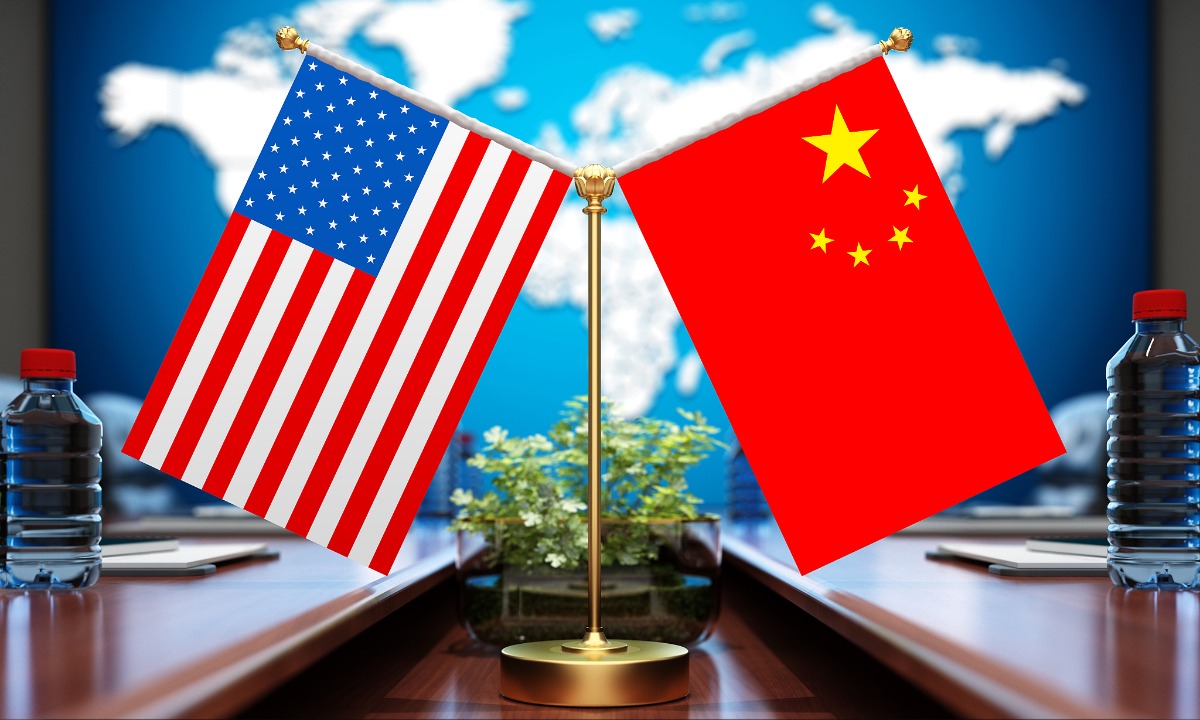
The Chinese Ministry of Commerce announced on Friday afternoon that Beijing and Washington have remained in close contact since the two-day trade talks in London earlier this month, confirming the details of a framework agreement.
“China will review and approve export applications for controlled items in accordance with its laws and regulations, and the US side will, in turn, lift a series of restrictive measures against China,” the ministry stated.
“We hope the US side will cooperate with China in line with the important consensus and conditions established during the conversation between the two presidents on June 5,” the statement continued.
On Thursday, US President Donald Trump said the US had “signed” a trade deal with China the previous day, without providing details.
“We signed the deal with China yesterday, right? We signed the deal with China,” Trump said at a White House event introducing a budget law. “With the China deal, we are starting to open up China,” he added.
He also mentioned that a “very big” deal, likely with India, would be signed soon.
Rare earth elements
Following the event, US Commerce Secretary Howard Lutnick told reporters that the US and China had signed an agreement codifying the terms decided upon in previous trade negotiations.
“They will deliver rare earth elements to us,” Lutnick said in a televised interview with Bloomberg, adding that if this commitment is fulfilled, Washington will lift its “countermeasures.”
Rare earth elements, essential for producing high-tech products, including those for the defense industry, were a major point of contention in the trade talks. China holds a near-monopoly on the supply of these minerals due to its massive share of global refining capacity.
Responding to a question on Thursday about rare earth exports, ministry spokesman He Yadong said China had approved a “certain number” of applications and would “continue to strengthen” the review and approval process for eligible applications.
He added that Beijing is willing to “strengthen communication and dialogue” with other countries on export controls and actively promote appropriate trade.
Lutnick also stated that the US plans to reach agreements with 10 major trading partners in the coming weeks. The deadline for countries to negotiate trade terms before higher tariffs are reinstated was July 9, following a 90-day suspension of import tariff hikes announced on April 2.
The two negotiating teams concluded the London talks by announcing they had agreed “in principle” on a “framework” that both sides would take home for their respective leaders to review, as they sought to get their uneasy truce, signed last month in Geneva, back on track.
The negotiations began after a highly anticipated phone call between Xi Jinping and Trump, which seemingly ended an intractable stalemate.
In the weeks following the initial agreement in Switzerland, Washington claimed China was restricting exports of critical minerals, while Beijing reacted to US restrictions on semiconductors and threats to impose visa barriers on Chinese students.
Asia
China hosts SCO defense ministers on warship amid regional tensions
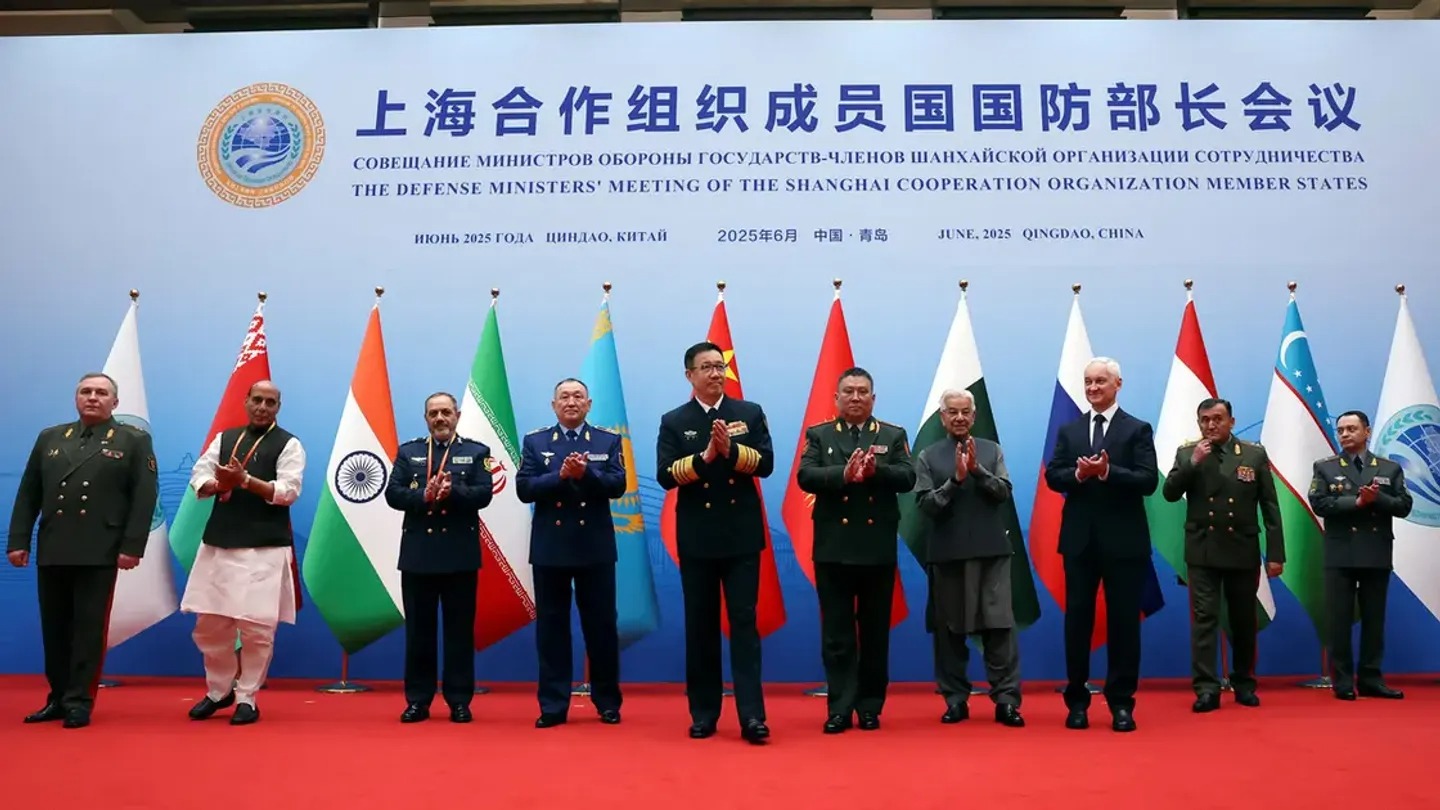
Chinese Defense Minister Dong Jun hosted his Iranian counterpart and other high-level defense officials from Shanghai Cooperation Organisation (SCO) member states aboard an advanced Chinese warship, just days after the US bombed Iran’s nuclear facilities.
Iranian Defense Minister Aziz Nasirzadeh was among the defense officials welcomed by Dong on a military vessel in the coastal city of Qingdao, China, as part of a two-day SCO defense ministers’ meeting that concluded on Thursday.
According to Chinese state television CCTV, Nasirzadeh and other defense officials toured the People’s Liberation Army (PLA) Navy’s Type 052D destroyer, the Kaifeng, and later attended a reception on the ship’s deck.

Aboard the ship, Nasirzadeh thanked Beijing for “supporting Iran’s legitimate position following the recent attacks” by Israel and the US.
“We hope that China will continue to stand on the side of justice, help maintain the current ceasefire, and play a greater role in de-escalating regional tensions,” Nasirzadeh said, according to Xinhua.
In his address to the assembled ministers, Dong reportedly stated that “unilateralism, protectionism, and hegemonic and bullying acts are on the rise, seriously disrupting the international order and becoming the greatest source of chaos and conflict.”
Dong called for closer cooperation within the United Nations, the SCO, and other multilateral frameworks, urging members to unite with “more like-minded forces” to defend international justice and maintain global stability.
“SCO countries must remain true to the organization’s founding ideals, uphold the ‘Shanghai Spirit,’ and deepen practical cooperation in all areas,” Dong said. “With stronger actions, we can jointly safeguard a peaceful environment for development,” he added.
The event followed the US attacks on three of Iran’s key nuclear facilities on Saturday, which Beijing strongly condemned.
The Chinese Foreign Ministry stated that the attacks on nuclear facilities under the supervision of the International Atomic Energy Agency seriously violated the UN Charter and its principles.
Additionally, the SCO meeting coincided with a NATO leaders’ summit in The Hague. In a statement from The Hague, US President Donald Trump announced that the US would hold talks with Iran about a possible nuclear deal “in the coming week.”
Bilateral Talks
According to Xinhua, the Chinese defense minister later held separate bilateral meetings with the defense ministers of Belarus, Pakistan, Kyrgyzstan, and Russia. The state news agency reported that all parties appreciated Beijing’s efforts and significant contributions to developing SCO operational mechanisms and deepening inter-sectoral cooperation during its rotating presidency. They also expressed a strong will to further consolidate and expand military ties.
Pakistani Defense Minister Khawaja Asif praised Beijing’s role in de-escalating tensions. “Pakistan highly values its robust friendship with China and is ready to work together to implement its three global initiatives, deepen military cooperation, and help maintain regional peace and stability,” he said.
For Russian Defense Minister Andrei Belousov, this year—the 80th anniversary of the victory in World War II, the Chinese people’s war of resistance against Japanese aggression, and the world’s anti-fascist war—presents an opportunity to deepen bilateral military relations. “In line with the consensus of our leaders, we will intensify strategic communication and cooperation and contribute to global strategic stability,” he said.
Meanwhile, Indian Defense Minister Rajnath Singh also attended the Qingdao meeting. This marked the first visit by an Indian defense minister to China since the deadly border clash between the two countries in 2020.
Military trust
According to the Chinese Ministry of Defense, the SCO defense ministers’ meeting is one of the key events held during China’s rotating presidency of the SCO this year. The ministers, along with representatives from the SCO and regional anti-terrorism bodies, gathered to further strengthen military trust and deepen practical cooperation among member states.
The SCO, a 10-nation bloc comprising China, Russia, Kazakhstan, Kyrgyzstan, Tajikistan, Uzbekistan, Pakistan, India, Iran, and Belarus, currently covers approximately three-fifths of the Eurasian continent and about 43% of the world’s population.
The Beijing meeting, held under the rotating presidency of the Shanghai Cooperation Organisation, highlighted China’s role as a significant international actor and the importance Tehran places on its relationship with Beijing, even as China has largely remained on the sidelines of the Israel-Iran conflict.
During a regular press conference at the Chinese Ministry of Defense on Thursday, when asked if Beijing was considering providing military support to Iran as an SCO member, ministry spokesman Zhang Xiaogang told CNN, “China is ready to cooperate with all parties to play a constructive role in maintaining peace and stability in the Middle East.”
Kaifeng destroyer
The Kaifeng destroyer, where the meeting’s reception was held, is the sixth vessel of the extended Type 052D variant and serves in the North Sea Fleet. Commissioned in April 2021, the ship is approximately 159 meters (521 feet) long, weighs 7,500 tons, and is equipped with 517C anti-stealth radar. Its expanded deck allows for the landing of the PLA Navy’s Z-20 helicopters.
The warship has conducted numerous long-range exercises, including a passage through the Tsushima Strait in April, as part of Beijing’s growing operational presence in the western Pacific.
It was publicly displayed during the 74th-anniversary celebrations of the Chinese navy in Qingdao in 2023.
-
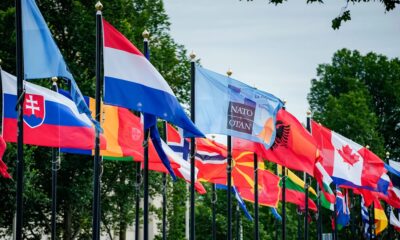
 Diplomacy2 weeks ago
Diplomacy2 weeks agoNATO summit focuses on arms race in the Silicon Valley age
-
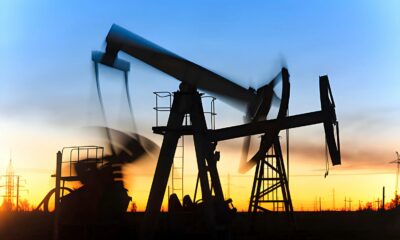
 Europe2 weeks ago
Europe2 weeks agoIsrael-Iran conflict postpones EU plan for Russian oil sanctions
-
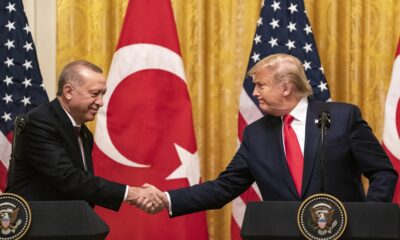
 Diplomacy2 weeks ago
Diplomacy2 weeks agoErdoğan to meet Trump at NATO summit to mend relations
-

 Europe2 weeks ago
Europe2 weeks agoGermany to expand military with 11,000 new personnel this year
-
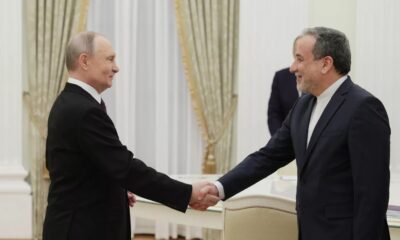
 Diplomacy2 weeks ago
Diplomacy2 weeks agoIranian foreign minister travels to Moscow for Putin talks after US strikes
-
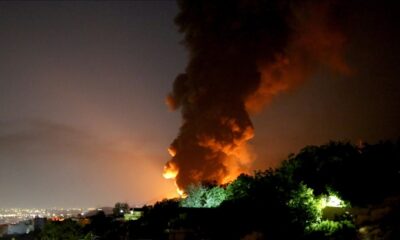
 Middle East2 weeks ago
Middle East2 weeks agoUS bombs Iranian nuclear sites, sparking fears of wider conflict
-
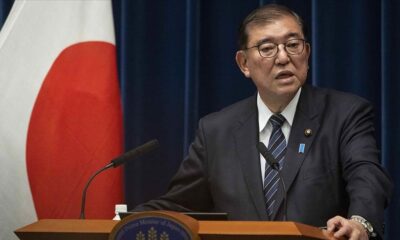
 Asia2 weeks ago
Asia2 weeks agoJapan’s prime minister skips NATO summit amid alliance strain
-

 Diplomacy2 weeks ago
Diplomacy2 weeks agoBRICS internal trade volume hits the $1 trillion mark




